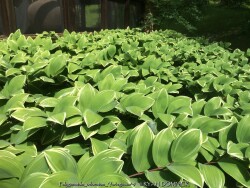
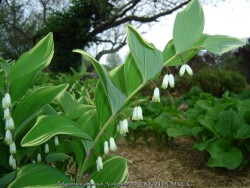
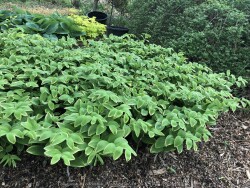


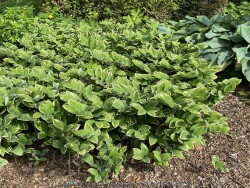
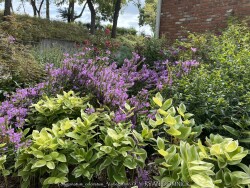
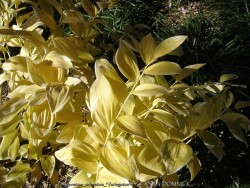
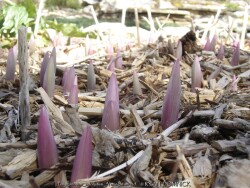
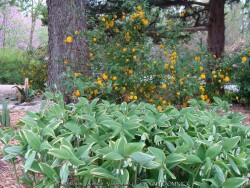
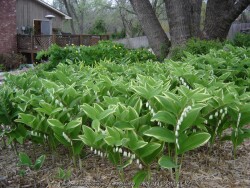
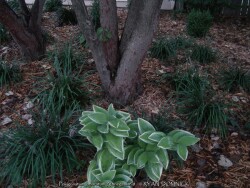
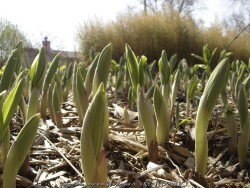

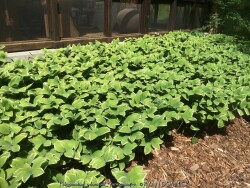
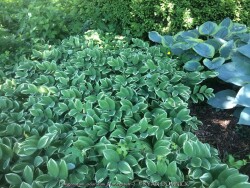
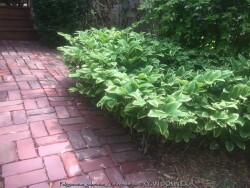
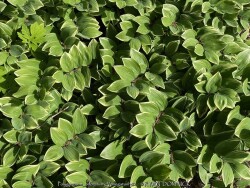
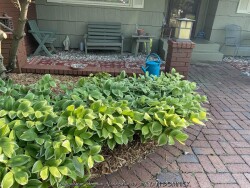



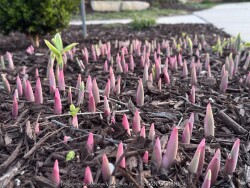
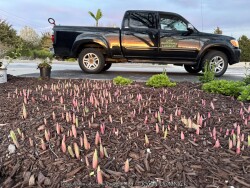
Plant Min Zone: 3a
Plant Max Zone: 8a
Sunlight: Part Sun, Shade
Water / Rainfall: Low, Average
Soil Quality: Average, Rich
Bloom Season: Spring
Flower Color: White
Berry / Fruit Color: None
Spring Foliage Color: Light Green, White, Variegated
Summer Foliage Color: Light Green, White, Variegated
Fall Foliage Color: Yellow
Evergreen Foliage: No
Winter Interest: No
Scented Flowers: No
Drought Tolerance: Medium, High
Wet-Feet Tolerance: Low
Humidity Tolerance: Medium
Wind Tolerance: Medium
Poor Soil Tolerance: Rocky Soils
Height: 1' - 2'
Width: 1' - 2'
Growth Rate: Slow, Medium
Service Life: Very Long: 10-20 years
Maintenance Need: Almost Zero Maintenance
Spreading Potential: Low
Yearly Trimming Tips: Trim Perennial to Ground Around First Fall Freeze: No Winter Interest.
Plant Grouping Size: Medium Grouping of 5-10, Mass Planting of 10 or more
Best Side of House: East Exposure, North Exposure
Extreme Planting Locations: Survives Under Roof Overhang, Root-Bound Soils Under Tree, Resistant to Rabbits
Ornamental Features: Emerges Early in Spring, Multiple Seasons of Interest, Exceptional / Colorful Foliage
Special Landscape Uses: Groundcover
Possible Pest Problems: None
Plant Limitations: None
Shippable in 2026: YES
Solomon Seal (Polygonatum sp.) is a very large genus of perennials comprising dozens of species. Many of the species that are appropriate for garden use in Kansas are native to seasonally dry to moist forests in North America and Asia. New growth arises each year from a finger-like slowly spreading rhizome system. The foliage has a central stem with architecturally arranged opposite leaves covering the length of the stem gradually getting smaller towards the end. Small bell-shaped white flowers appear in early spring followed by bluish-purple fruit. Flowers and new spring growth is frost-hardy. Most Solomon seals do well with average garden soils and moisture with many tolerating dry-shade well. Solomon's seal can grow for many years increasing in density without ever needing division. Over time this creates a nearly weed-proof groundcover. in eastern Kansas with 40 inches of rain per year on average, there seems to be plenty of moisture to create extremely healthy patches of Solomon seal that compete well with tree roots. While some species can tolerate sun, there are many better choices as sunburning will likely occur with afternoon sun in temperatures over 95 degrees F. Combine with hostas or other shade plants to create a dramatic effect. Included in our "edibles" database but depends on how hungry you are! Variegated Solomon's Seal (Polygonatum odoratum 'Variegatum') adds a bright splash of light green and cream color to the shade garden. Fruiting does not occur on this variety like others. Height is uniformly 18-24" tall. Fall color is a brilliant yellow for a week before going dormant. Maintenance is easy as stems easily detach when raking with fall clean-up. During the April deep freeze of 2007, temperatures bottomed out at 18°F after an extra warm March. Hosta and Solomon seal foliage had completely unfurled and was flowering. All hostas were killed to the ground but solomon seal foliage and flowers survived un-damaged! A great "Once it's there, it's there forever" plant for dry-shade!